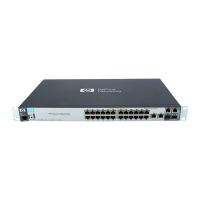86 • Monitoring HP NonStop SSL Reference Manual
Log and Audit Level Recommendations
The log level can be chosen individually for each log device through the parameters LOGLEVELFILE,
LOGLEVELEMS and LOGCONSOLE. Depending on the device, it may be desirable to see different kind of log
messages. The following table gives an indication of what “severity” individual log levels relate to:
Log Lever Meaning
Level 0 fatal errors.
Up to level 10 only warnings.
Up to level 30
On Startup, HP NonStop SSL issues a whole set of log messages. Those will document the current
version and the settings which were used to start the HP NonStop SSL process. The messages only
occur once at startup.
Up to level 50 normal log messages like “close by remote client”, etc.
Up to level 89 messages only needed for trouble-shooting.
Starting from level 90 only messages to analyze extreme problems.
See the appendix for a detailed list of log messages and warnings issued by HP NonStop SSL.
Please refer to the AUDITLEVEL parameter description for recommendations and considerations for setting the audit
level.
Customizing the Log and Audit Format
HP NonStop SSL allows customizing the appearance of the log or audit messages to a certain extent. For example, you
may add the current date to the log message header. Please refer to the AUDITFORMATEMS,
AUDITFORMATCONSOLE, AUDITFORMATFILE, LOGFORMATCONSOLE, LOGFORMATEMS, and
LOGFORMATFILE parameter descriptions for details.
Using SHOWLOG to View a Log File
HP NonStop SSL processes may be configured to write log files to disk (see parameter LOGFILE). For performance
reasons, those log files are created as unstructured files. While the program is running, the log file is kept open.
However, it may be concurrently opened for viewing. To convert the unstructured file into a readable format, the
SHOWLOG tool is supplied. Invoking SHOWLOG without arguments will display a brief syntax summary:
20> showlog
comForte SHOWLOG log file converter Version T9999A05_16Apr2009_comForte_SHOWLOG_
0022
usage: SHOWLOG <log file> [<process_one_line file>] [<start>] [<end>]
<log file> | the input log file to be converted
<process_one_line file> | file to write to, default is '*' meaning the home
terminal
<start> | either byte offset from beginning OR
timestamp in format "ddmmmyy HH:MM:SS.TT" (example 30Jan07 2
1:01:59.07)
<end> | either number of bytes after beginning OR
timestamp in format "ddmmmyy HH:MM:SS.TT" (example 30Jan07 2
1:01:59.07)
---examples---
SHOWLOG logfile whole log file written to home
terminal
SHOWLOG logfile logedit 10000 1000 1000 bytes starting at offset
10000
written to EDIT file logedit

